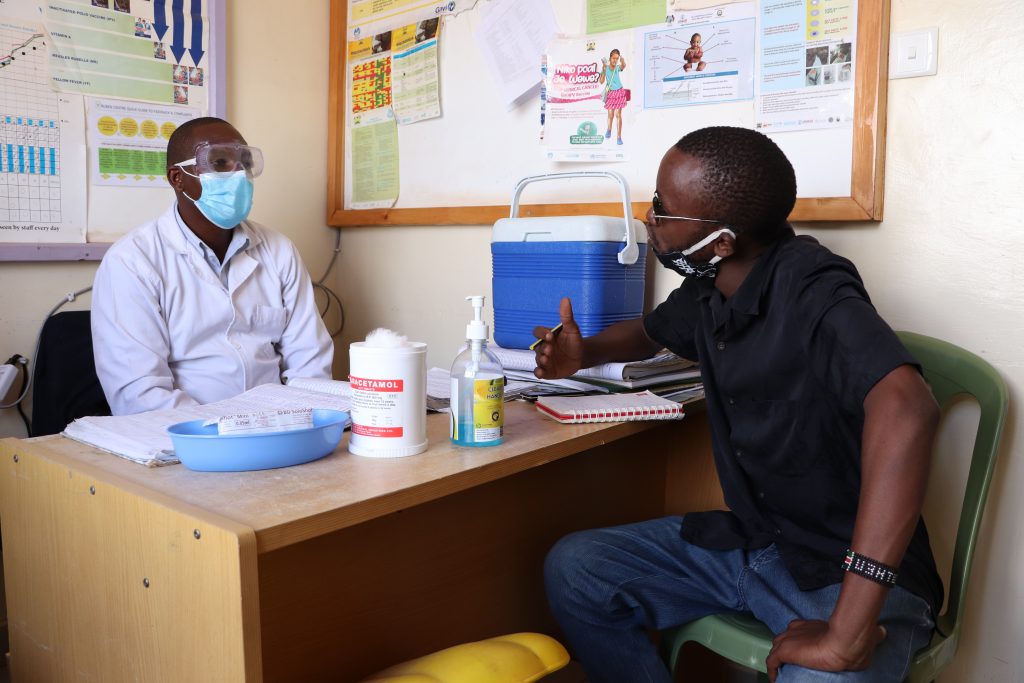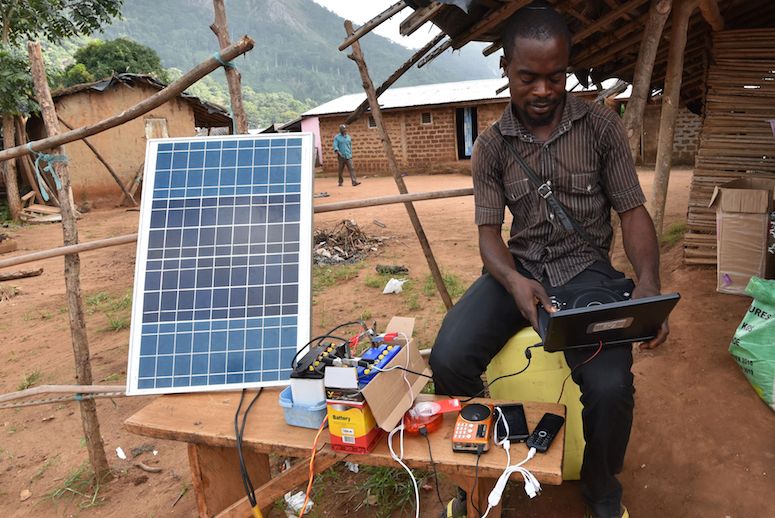FALSE: Photo does not show the drought situation in Embolioi, Kajiado County, in October 2022
I
Childhood immunization/vaccines are the most effective way of preventing childhood diseases that cause severe illnesses, life alterations and in some instances death. Generally, vaccines are recommended by agencies and local governments in accordance to World Health Organization’s standards and guidelines. In Kenya for instance, the immunization schedule is given by the Division of Vaccines and Immunization (DVI) in the Ministry of Health and is commonly known as KEPI (Kenya Expanded Program on Immunization).The schedule runs from birth to eighteen months in which twenty four antigens are administered preventing against twenty six diseases.
The world immunization week celebrated on 24th-30th April this year aimed at promoting the use of vaccines to protect people against diseases. This year’s theme ‘vaccine work for all’ reflects on the importance of vaccines not only for children but for all people. Vaccines not only protect a child from deadly diseases such as polio, tetanus, diphtheria, measles, tuberculosis and pneumonia, but they also keep a child safe by greatly reducing diseases spread from child to child. Vaccines also ensure children have a better chance of growing normally and fulfill their maximum potential. Early childhood health care remains critical since ninety percent of brain and physical functions develop in the first five years of life. This illustrates the key role immunization play in early childhood development eradicating or highly reducing the burden of infectious diseases. Therefore, every child in the world should successfully complete the full immunization schedule as recommended.
Efforts by the Ministry of Health, county governments and developmental partners in Kenya have led to an increase in immunization coverage in Kenya from seventy percent in 2017 to eighty two percent in 2018 according to the Ministry of Health. Kenya still aims to achieve a hundred percent coverage but a multi sectorial approach is needed to hit the target. Ruben Health Centre located in Mukuru Kwa Ruben one of the informal settlements making up the large Mukuru slum, immunization coverage for the Kwa Ruben area has been reported at ninety percent higher than the national coverage. According to Lee Karoki the Head of nursing services at the health Centre, collaborative and co-ordinated efforts between the facility and community health workers based at the health center and in the community have helped reach out to the majority of children residing in Mukuru slum. The health Centre depends on community health workers to identify and bring children to the health center for immunization, defaulter tracing and vaccine administration during door to door immunization drives organized by the health Centre and other partners .It is easy to see the accuracy of the report by comparing school enrolment rates and immunization clinic attendance numbers.
Rose Mbithe a community health worker owes the success to the tailor-made local solutions and interventions. ‘ Door to door immunization campaigns help community health workers pass information about vaccines by word of mouth.’ During these mass immunization campaigns, health workers administer oral polio vaccine to children in the informal settlement. This method has proved to be effective since the take the clinic to the children hence allowing more children access the vaccine. Health talks given to mothers when they attend the clinic for their children’s vaccination also help create awareness on immunization and it’s benefits in turn encouraging mothers take their children for vaccination. The community health workers also arrange for women meetings in their houses, water points and churches to educate mothers on the importance of immunization for their children. These workers are vital in creating awareness and educate residents on the benefits of immunization. Community health workers are effective since they reside in the same communities, have a better understanding of the people and are easy to relate with. Being residents in the informal settlement too makes them accessible even at odd hours. The process at the Ruben Health Centre is a perfect example of meaningful partnerships specified by the needs of the community and having members of the same community as the core in encouraging residents for vaccine uptake.
In contrast to the situation in Mukuru Kwa Ruben, other informal settlements and upcountry areas have not posted encouraging immunization coverage rates mainly due to lack of health facilities and a vibrant community health workers network. The lack of health facilities also inconveniences community health workers since local health facilities act as operation center for the community health workers. Lack of access to reliable information combined with the lack of a health facility makes it difficult for every mother to have up to date information on vaccination. Nevertheless, the lack of a heath facility within an informal settlement means either walking long distances or incurring extra costs which most of the time discourage mothers from attending immunization clinics.
Despite having ninety percent immunization coverage, both Rose and Lee highlight the need to hit the one hundred percent and why it remains quite difficult to hit that target. Ignorant mothers and cultural beliefs of substituting recommended vaccines with herbal remedies slow down the progress towards immunizing every single child. This creates the need for more accurate information on immunization disseminated to these types of mothers. With the tremendous advantages of vaccines, questions still arise on their safety and effectiveness.
Generally, vaccines are considered far safer than therapeutic medicines and they have an excellent safety record. In Ruben Centre, the medics ensure vaccines are effective by maintaining the cold-chain to ensure that the vaccines remain potent. Lee Karoki remarks that they keep their sessions short to ensure a vaccine is administered in the shortest time possible to maintain their potency. A vaccine vile monitor is always at hand at the facility which helps health workers check potency of the dosage only using them at stage 1 and 2 while they are potent, dosages that display a reading of stage 3 and 4 are disposed since they are not potent and effectiveness cannot be guaranteed. The immunization clinic at Ruben Health center runs four days a week maximizing on the hours for immunizing children this also enables many mothers to attend the clinic as compared to other areas where immunization clinics are once weekly.

With improved infant and child mortality, women tend to opt for fewer children as the need to have many children to ensure that some reach adulthood is reduced. This has a significant impact on health, education, social and economic benefits for both women and children. This in turn builds societies that women are empowered to pursue their own goals. Other benefits on immunization include protection against bioterrorism, enhancing equity, promoting peace and economic growth.
With the benefits of vaccines extending beyond prevention of specific diseases in individuals, collective efforts by relevant health stakeholders, governments regional and international bodies need to ramp-up coordinated, strategic to realize one hundred percent immunization coverage globally. GAVI, the allianceis working tirelessly towards protecting the next generation of children by improving access to new and under-used vaccines for millions of vulnerable children globally. Currently, the Covid-19 pandemic is undoing tremendous work put in to improving immunization coverage rates. During the pandemic, a drop in the number of women attending immunization clinics has been noted in comparison with pre-Covid-19 period. With this in mind, innovative and effective ways should be developed to ensure children continue receiving routine immunization.
By; Dennis Beru and Daniel Muteti Jnr .







